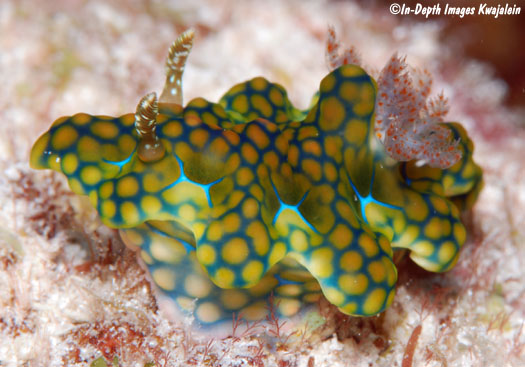
This is a rare species in the Marshalls. We have found one specimen at Enewetak and about a dozen at Kwajalein, although additional specimens have been observed by other divers. All specimens here have been on lagoon pinnacles or on the leeward seaward reef, either under rocks on in ledges at night. The largest one measured 50mm in length. John and Lynette Flynn also found one at Rongelap Atoll. This species varies considerably from different parts of the Pacific. The Marshall Islands specimens all seem to have a similar pattern, but the general coloration does vary. We have other color forms from Hawaii, the Solomons, Indonesia and the Philippines.

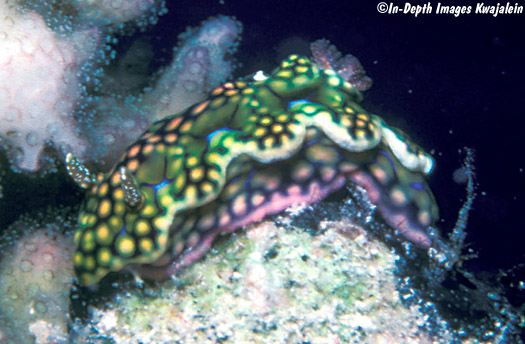
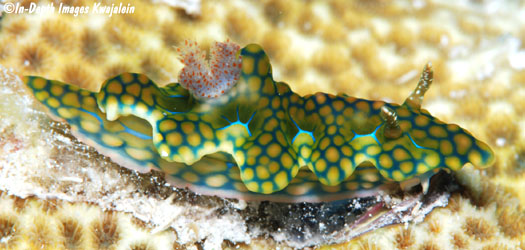
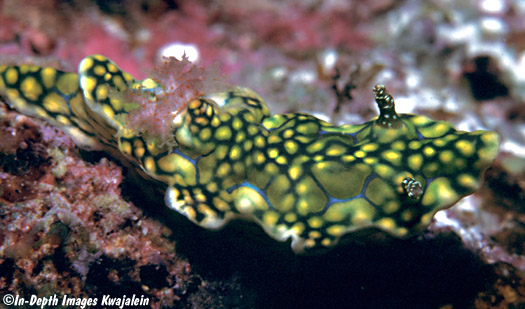
The specimen in the two photos below was found in a ledge at night on the Kwajalein Atoll's western seaward reef in 15m of water on 25 October 2008.
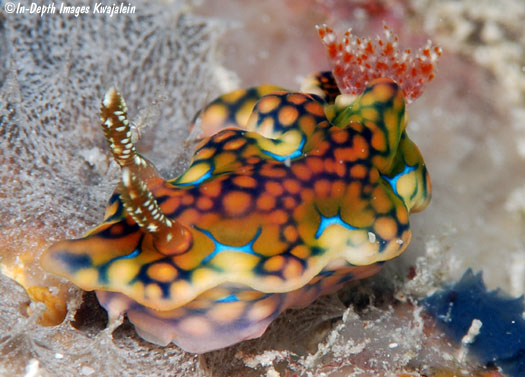
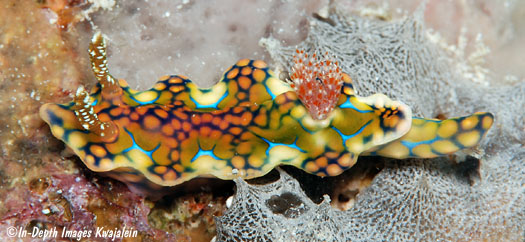
This one was found in a seaward reef ledge eating a gray sponge on 20 November 2011.
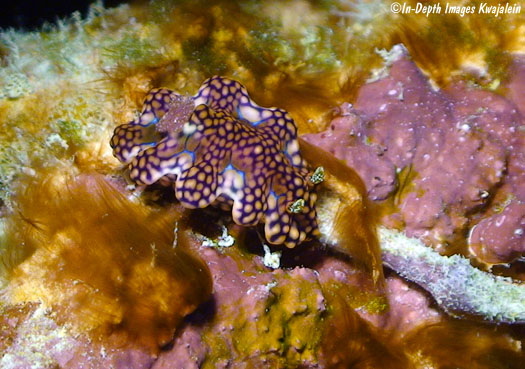
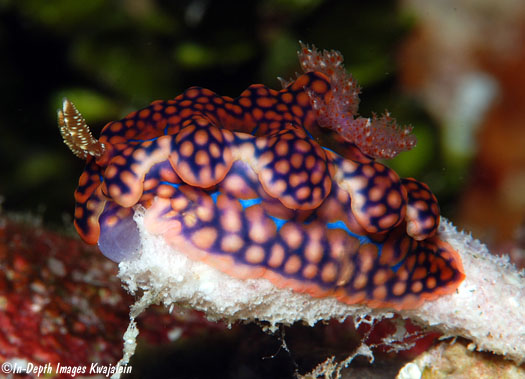
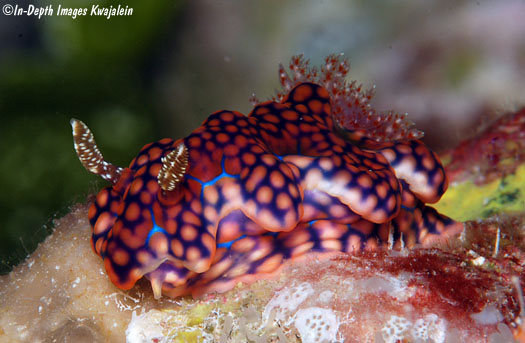
This smaller one was on the same gray sponge as the previous specimen just a week later on 27 November 2011, also in a seaward reef ledge.
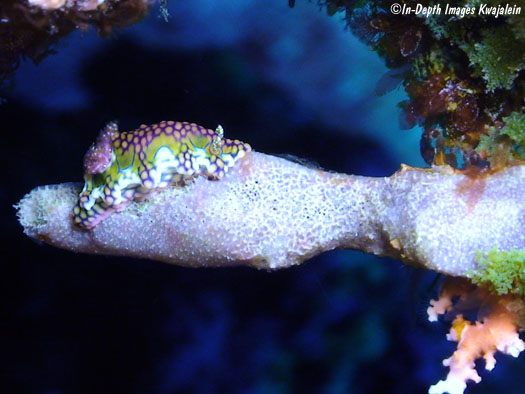
The photo below shows the 50mm specimen found at Enewetak.
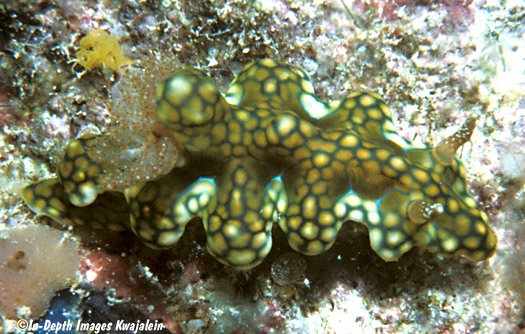
This one was in a small cave on the seaward reef on 30 March 2014.
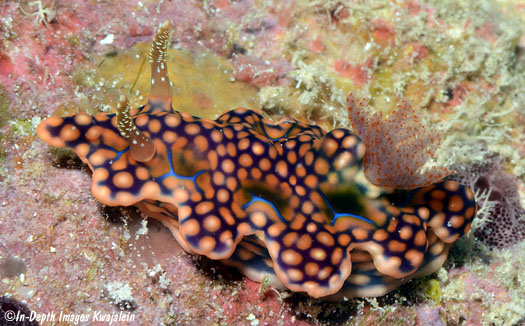
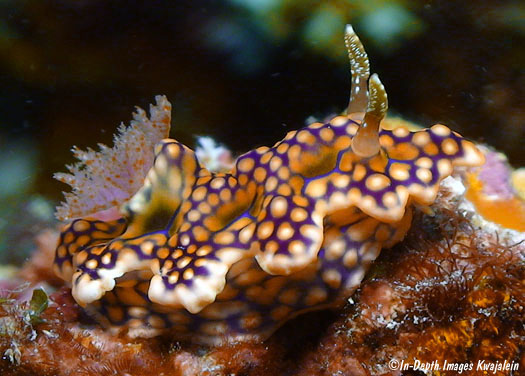
The two photos below show a specimen found under a small rock in a lagoon Halimeda patch on 1 June 2015.
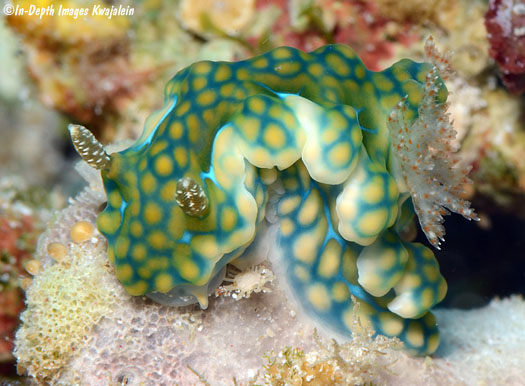
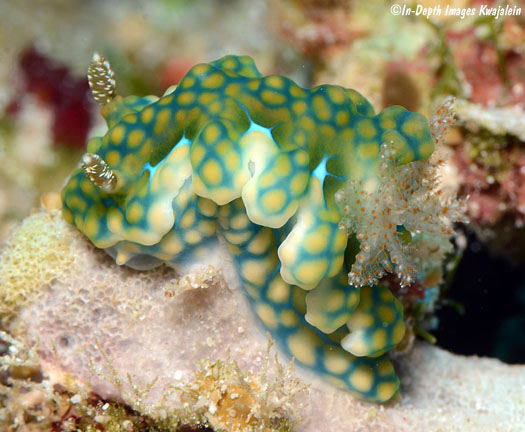
On a seaward reef night dive in early 2016, Stan Jazwinski found a group of at least 6 various sized individuals feeding on a large colony of their prey sponge. Returning to the same sponge colony in the daytime, no trace of the nudibranchs could be seen. However, on a subsequent night dive, they were again spotted feeding on the sponge. This indicates that these nudibranchs at least must need to hide, probably from predators, during the day and emerge only at night to feed. This behavior of hiding away during the day is common in most Kwajalein nudibranchs. Unlike other place we have been, including Indonesia, the Philippines and even Hawaii, where more species can more easily be seen out in the open in daylight, only a few species can be found exposed by day in the Marshalls. We must have some pretty voracious predators here, hungry enough to ignore the distasteful or even poisonous chemical defenses of many nudibranch species.
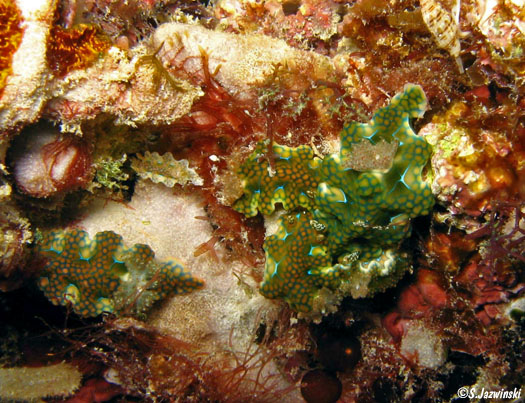
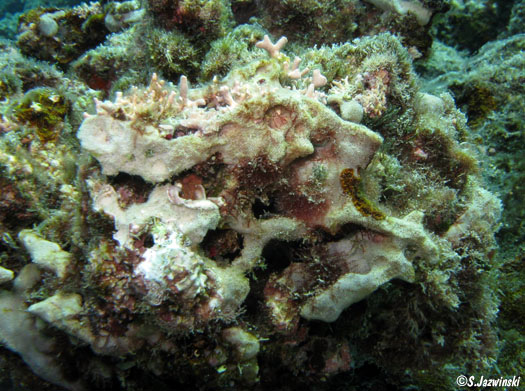
Created 3 January 2006
Updated 3 May 2021